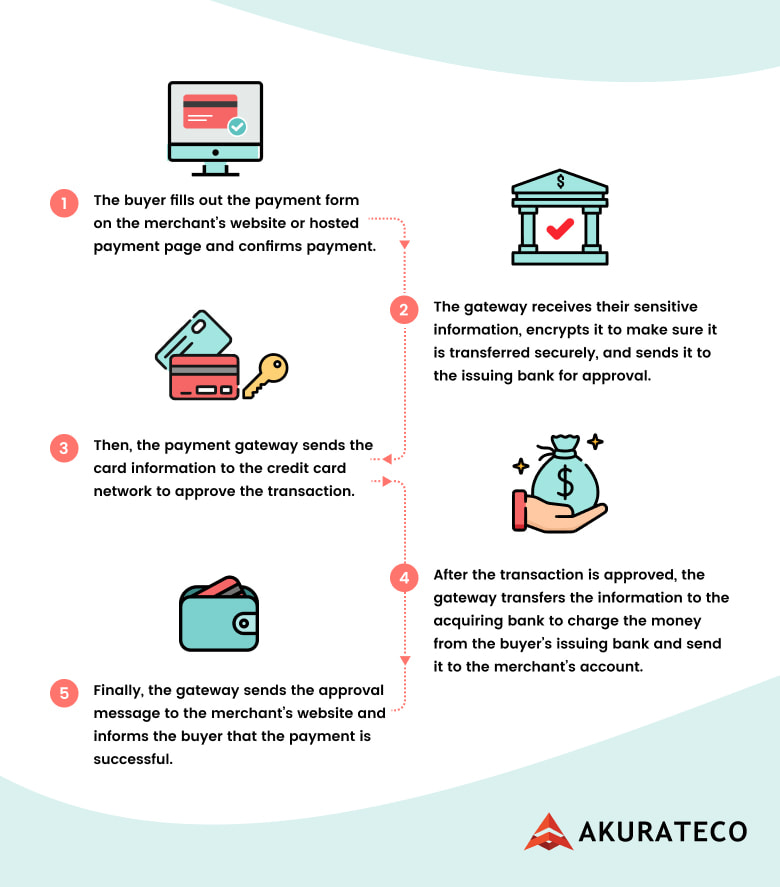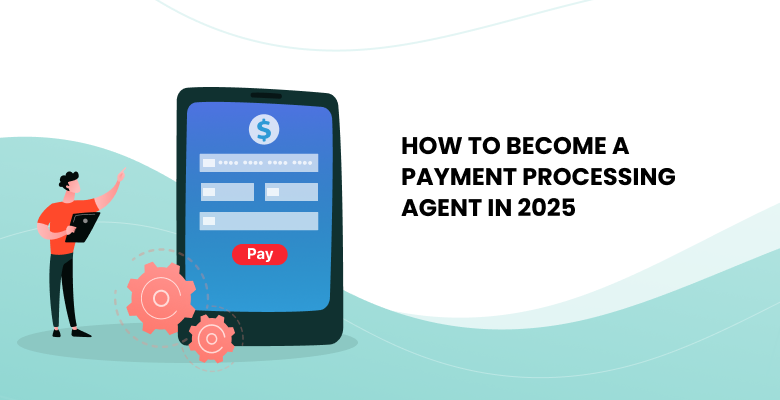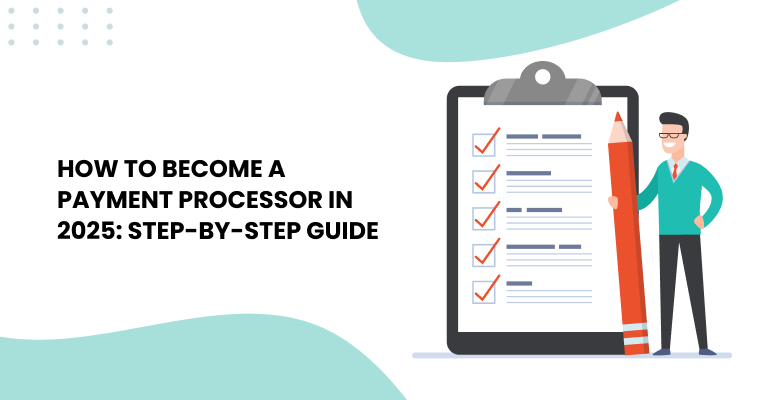
It is not possible nowadays to accept payments online without a payment gateway integration. It may seem like a burdensome task for business owners who simply want to get paid and are unwilling to get involved in the technical aspects of e-payments. The good news is that payment technologies are now so developed that you can simplify integration as much as possible. This article will outline the basic concepts of payment gateway, describe its integration types, and share a step-by-step guide on payment gateway integration that you can make on your own or turn to a payment gateway provider.
What you need to know about payment gateway
Each business owner seeking to sell goods and services online requires technology that enables transactions to be processed. In a nutshell, that is what a payment gateway is: a technical backend service that takes over after your customers fill out the payment form and confirm the purchase. However, if you’re exploring how to start a payment gateway business in India, using a white-label payment gateway can dramatically simplify the integration and reduce time-to-market.

Now that you understand the operating principle of a payment gateway, we can explore the types of integrations available.
Types of payment gateway integrations
The choice of payment gateway integration type for your online business should depend on your business requirements. There are three main types of payment gateway with their own specific functionality and integration approaches. Each of them has pros and cons, which you can review below:
Hosted Payment Page
If you integrate a hosted payment gateway, the buyer will be transferred from your website to the payment gateway provider’s page to enter their payment details and complete payment. Thus, their sensitive data will be stored on the provider’s side.
Pros:
- It is the most simple and cost-effective way to start accepting payments for goods and services online since it requires no technological development on your part.
- Protection of your customers’ sensitive data with no Payment Card Industry Data Security Standards (PCI DSS) certificate required from you: since the processing of payment data takes place on the side of the payment gateway, its vendor is responsible for data security.
Cons:
- A higher percentage of abandoned carts, since the customers experience a lack of trust after being redirected to a third-party site to complete payment.
- Because the provider has full control over the payment gateway, you are completely dependent on them in case of unforeseen circumstances.
Self-hosted Payment Page
The main distinguishing feature of a self-hosted payment page is that the gateway is integrated directly into your website. As the customer fills out his payment details on your website, you are responsible for keeping their payment data secure.
Pros:
- Trust will be enhanced since customers are not redirected to a third-party page to complete their payment.
- The ability to use advanced payment technologies like smart routing payments and cascading to increase your conversion and save on processing costs.
- Enhanced security of customers’ sensitive data.
- It is a customizable option that can be branded according to your brand’s colors and style.
Cons:
- In order to keep customers’ data secure, you must obtain PCI DSS certification, which is a complex and costly procedure.
- Slower time-to-market because integrating payment gateways will require technology adjustments on your side.
Direct Post Payment Gateway
Direct post payment gateway is halfway between the first two types. If you choose this option, customers will enter their payment data on your website, but it will be immediately sent from the back end of your application to the payment gateway’s secure system.
Pros:
- The gateway’s provider will be responsible for the secure storage and transfer of customers’ data, which is why you are not required to obtain PCI DSS certification.
- Enhanced customer experience due to seamless checkout on your website.
Cons:
- Gateway providers have strict security requirements for your website to ensure that the sensitive data of customers will not be compromised.
- There is an increased chance that customer data will be compromised if it is not protected properly.
If you want to know more about how to keep your customers’ data secure, you may also like this article:
How to Store Credit Card Information Securely
The Step-by-Step Guide to Integrating a Payment Gateway
There are two ways to integrate a payment gateway into your site: either do it on your own or turn to a payment gateway provider. If you decide to integrate a payment gateway yourself, it is vital to note that it will not come cheap since you need to hire a team of developers skilled in fintech products.
Let’s look at a step-by-step guide that will provide an overview of the process involved to get you started:
Identify your requirements and select a payment gateway that meets themIt is crucial to research and choose a payment gateway that meets the specific demands of your business. They include transaction fees, integration type, the ability to accept alternative payment methods, integrations with preferred banks and payment providers, additional feature development, etc.
Register for a payment gateway accountFrom the moment your account is created, the payment gateway integration procedure begins. The registration procedure is determined by the payment gateway provider. Generally, you are required to provide some basic information about your business for verification, receive credentials for access, and your payment gateway account is set.
Obtain API documentationThe next crucial step is to obtain Application Programming Interface (API) documentation to provide technical specifications and guidelines for integrating the payment gateway with your website or application.
Decide on a programming languageChoose a programming language to integrate the payment gateway with your website or application. Some commonly used programming languages for payment gateway integration include PHP, Ruby, Python, etc.
Build integration with a payment gatewayYou will need to build the integration with the payment gateway. It involves creating code that will allow your website or application to communicate with the payment gateway’s API — much like the structure used by an online payment aggregator.
Test the integrationFor ensuring that the integration works properly, it is vital to test it thoroughly, including testing for errors, security vulnerabilities, user experience issues, etc.
Acquire certificationOnce you have made sure the gateway is working as expected, you need to obtain certification from the gateway provider to ensure that your integration meets the necessary security standards and technical requirements.
Launch Payment Gateway IntegrationOnce certification is obtained, you can launch the payment gateway integration on your website or application. This typically involves adding a payment form or button that allows users to complete transactions using the payment gateway.
Monitor and maintain payment gateway integrationAfter the payment gateway integration is live, it is vital to monitor and maintain it in order to preserve its efficiency. It may require fixing bugs, updating code to comply with changes in the payment gateway’s API, optimizing the integration for better performance, etc.
Integrating a payment gateway on your own is a complex process with multiple steps involved. However, you can also use a white-label payment gateway and simplify all these processes as much as possible. It is a fully brandable ready-to-use payment solution developed by top experts in the field. Its system already offers top-notch technologies for revenue increase and cost-saving, such as smart routing, cascading, automated invoicing, risk management, etc. In addition, white-label payment gateways have multiple integrated banks and payment providers that are available to users via one integration to its system, significantly reducing time-to-market. Overall, it is an out-of-the-box solution that takes 1-2 weeks to implement and will require a monthly or yearly payment depending on your payment provider.
To integrate a white-label payment gateway into your website or application, you only need to complete one step: specify the type of integration and the necessary payment connectors, and provide the payment gateway provider with your data and documentation for integration. All the next steps will be handled by them until the payment gateway goes live. Furthermore, the provider will constantly maintain and update the gateway to the latest payment trends and security standards. Keep in mind that scaling your system through third-party solutions may introduce payment gateway extension integration challenges related to version compatibility and routing conflicts.
In outline
The development of your business, its revenue, and customer experience will depend on your payment system in the future. For this reason, you need to choose a payment gateway that meets the requirements of your business. After you decide on one, there are two ways to perform the integration: either do it on your own or with the help of a payment gateway provider.
If you decide to put your time, effort, and finances into integrating a payment gateway yourself, our detailed guide may be of assistance to you. However, if you want to integrate a cutting-edge white-label payment gateway and simplify the integration procedure, Akurateco is here to help you.






